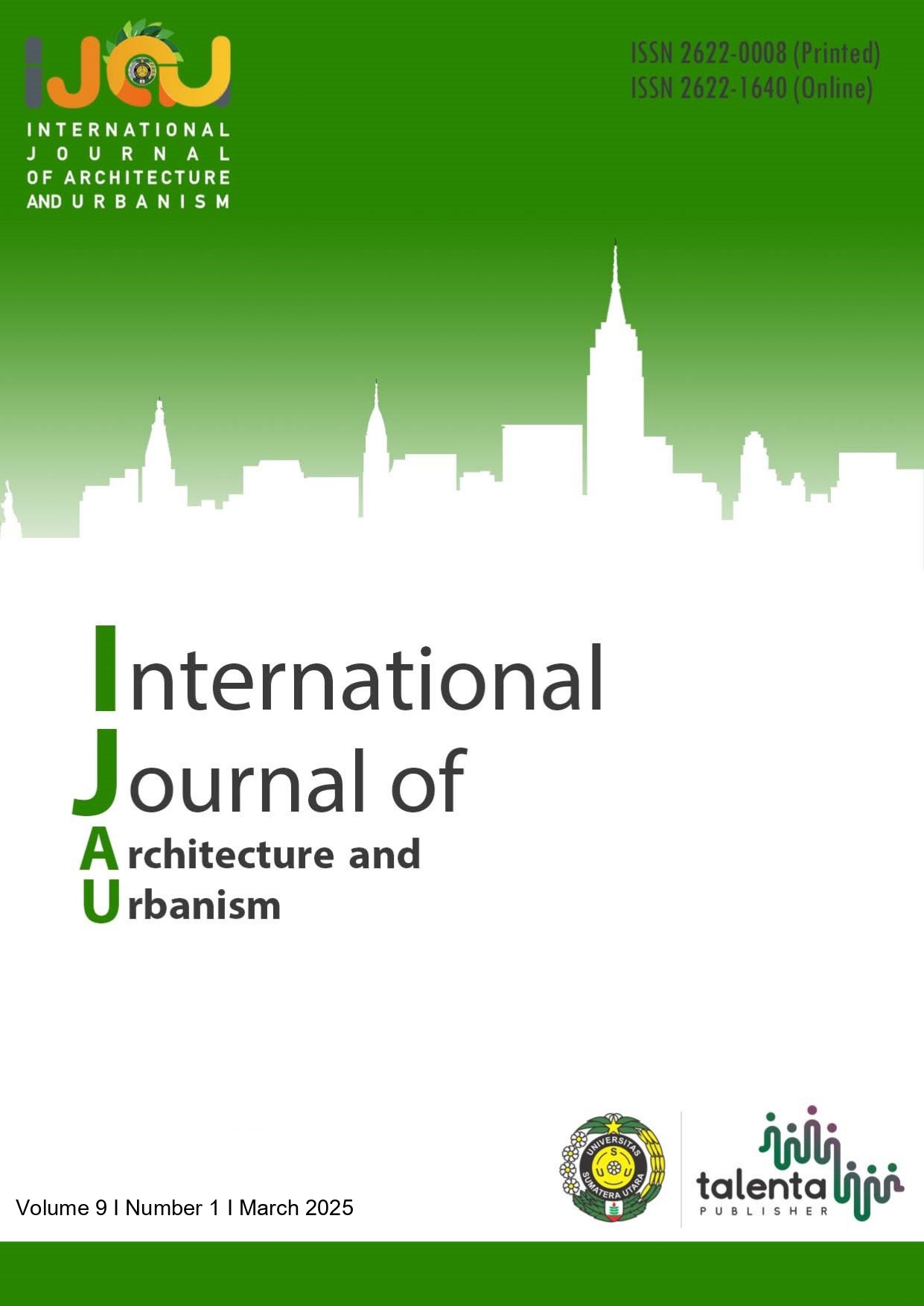Impact of Gating Characteristics On Place Dependence In FESTAC Housing Estate, Nigeria
DOI:
https://doi.org/10.32734/ijau.v9i1.20208Abstract
The evolutions of urban spaces has brought about diverse residential typologies which often end up as gated. This has implications for behavioural outcomes. The study examines the impact of gating characteristics on placed dependence in urban residential neighbourhoods. Qualitative survey method was used to collect primary data through the use of questionnaires and observation checklists. Nine neighbourhoods were identified within the study area with four (4) of them characterized as Single Family and five (5) multiple family house types. The study finds that gate (ing) was accorded greater priority and hence its prevalence regardless of house types. Nevertheless single family neighbourhoods have higher gating attributes than multiple family neighbourhoods. Also by comparative advantage place dependence is more pronounced in Single Family Neighbourhoods than the Multiple Family. Overall, the study finds that gating systems, speed bumps, security patrol gate house, and security signage are the significant predictors of place dependence in FESTAC. The findings therefore validates the increasing popularity of gating in the shaping of the urban residential environment and therefore needs to be considered as a critical facility that serves functional utility by urban planners and designers as a goal to improve place dependence attributes in urban residential environment.
Downloads
Downloads
Published
How to Cite
Issue
Section
License
Copyright (c) 2025 International Journal of Architecture and Urbanism

This work is licensed under a Creative Commons Attribution-ShareAlike 4.0 International License.











.png)





